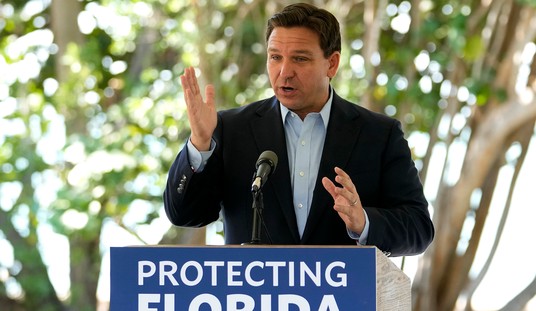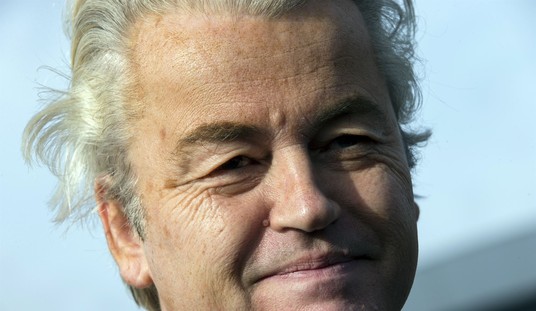Suzy Weiss has written an excellent story for Bair Weiss’ Substack site about a renowned scientist who until fairly recently was considered one of the top people in the field of cancer research. David Sabatini is someone who it was believed could one day win a Nobel Prize for medicine. Now he’s an unemployed stay-at-home dad. The story of how he went from one to the other is incredible but you probably wouldn’t say it’s surprising.
In 2018, David Sabatini was a world-renowned molecular biologist. He was a tenured professor at MIT. He ran a major lab at the Whitehead Institute, overseeing a team of 39 researchers, postdocs and technicians. Their job was to disentangle the mystery of the mTOR signaling pathway, a protein Sabatini had discovered while still in medical school, at Johns Hopkins. The mTOR signaling pathway plays a critical role in tumor development. Figuring out how it works would go a long way toward saving countless lives…
on the night of April 18, 2018, after an evening of whiskey tasting—Sabatini is a whiskey aficionado—he and Kristin Knouse had sex. Knouse was an incoming cancer researcher at the Whitehead, where she would also head her own lab; hers focused on liver regeneration. He was 50. She was 29. He had split with his wife, and was in the process of getting a divorce.
The next month they met up at Knouse’s condo near Boston Common where they discussed a few ground rules for their tryst. They agreed they could see other people. Knouse, Sabatini remembers, had ongoing flings with men who she referred to with nicknames like “anesthesiologist fuck buddy,” “finance bro,” and “physics professor,” and she wanted to keep it that way. Also, they wouldn’t tell anyone. Why complicate things at work? It was all supposed to be fun.
Six months after their relationship started Sabatini’s employer announced a new policy that the head of any lab could not have a sexual relationship with a coworker. Sabatini didn’t go to his superiors to report the relationship because by that time it was already cooling off a bit. He had started a relationship with a non-coworker in Germany. But over time things started to take a turn between him and Knouse:
Knouse didn’t want to let go. In January 2020 she texted, in part: “I get anxious when I don’t hear back from you and then I see you post stuff on Twitter and it provides an admittedly small and silly but still another bit of evidence to this growing feeling that you don’t care about me in the way that I care about you.” He wrote back: “I am sorry but you are being crazy.” In another text, Knouse admitted feeling “stung.” She added: “I think it’s worth thinking about whether you want someone who matches your passion, intellect, and ambition.” He wrote back: “I have to explore this.”
Hurt feelings at the end of a relationship like this aren’t exactly a novel outcome. But months later it seemed that Knouse had decided she was a victim.
In October 2020, Knouse texted her friends that she was “unpack[ing] a ton of suppressed abuse and trauma from an obvious local source”—an apparent reference to Sabatini. Knouse’s fellowship at the Whitehead was ending, and she didn’t apply for any faculty jobs there. When the new director, Ruth Lehmann, called Knouse to ask why, Knouse complained for the first time of being “harassed.”
About a month later the Whitehead Institute hired a law firm to investigate Sabatini’s lab. The law firm spent 10 months writing a 248-page report which was revealed in August of 2021. A day later, Sabatini’s career was over. He was put on administrative leave by MIT. The funders who paid his salary fired him. The Whitehead Institute cut ties with him and the story was leaked to the Boston Globe. Even the biotech startups he’d created distanced themselves from him. What did the report conclude?
What had David Sabatini been found guilty of that merited this kind of punishment? Chiefly, failing to disclose his consensual relationship with Knouse. On top of that, the report found that Sabatini, in his day-to-day administration of the lab, violated the Whitehead’s Anti-Harassment Policy, since his “behavior created a sexualized undercurrent in the lab.” Sabatini’s relationship with Knouse exacerbated things, given his “indirect influence” over her, which violated the Anti-Harassment Policy and ran afoul of the “spirit” if not the letter of another of the institute’s policies…
“While we have not found any evidence that Sabatini discriminates against or fails to support females in his lab, we find that Sabatini’s propensity to praise or gravitate toward those in the lab that mirror his desired personality traits, scientific success, or view of ‘science above all else,’ creates additional obstacles for female lab members,” the report concluded.
Weiss spoke to a number of female scientists who worked in Sabatini’s lab. None of them would speak on the record because defending Sabatini in public could ruin their careers but they told Weiss the report got Sabatini wrong. Sabatini has filed a lawsuit against Knouse and she has counter-sued, accusing him of “grooming.”
There’s a coda to this story. Six months after he was fired a friend at NYU medical school called Sabatini to see how he was doing. He complained that he would never work in his field again and she, a vice dean at the school, assured him that someone would hire him. Sabatini asked if she would consider hiring him and for a time it was under consideration. The school sent the 248-page report on him to outside lawyers who agreed he hadn’t received due process.
Then a story about his possible hiring appeared in Science magazine and there were protests at NYU. An open letter advising the school to reconsider was signed by hundreds of people. There were long Twitter threads from people outside NYU who didn’t seem to know anything about the allegations. The school caved and agreed not to hire Sabatini. Presumably any other school that attempted to hire him would experience the same backlash.
Yesterday, Michelle Goldberg wrote a column for the NY Times titled “Amber Heard and the Death of #MeToo.” The gist of it is that Amber Heard is a victim of both Johnny Depp and a misogynist culture:
Online, there’s a level of industrial-scale bullying directed at Heard that puts all previous social media pile-ons to shame. Countless videos skewer Heard on TikTok; the ’NSync member Lance Bass joined in the trend of mockingly re-enacting her testimony. A makeup brand even took part in the anti-Heard melee, posting a TikTok video meant to contradict her lawyer’s description of how she covered up bruises. Meanwhile, every platform appears to be full of adoring pro-Depp memes. “Why Does It Seem Like the Entire Internet Is Team Johnny Depp?” said a Vice headline.
But it’s not just the internet. “Believe all women, except Amber Heard,” Chris Rock joked recently. A “Saturday Night Live” sketch last weekend turned one of Depp’s wildest accusations against Heard into a skit, treating her as a figure of ridicule and him as a charming scamp.
As is often the case, Goldberg’s readers are more sensible.
While both parties clearly have issues and were abusive to one another, only one tried to paint herself as an entirely innocent victim of domestic abuse. After watching the trial, it is hard not to think of Amber as the primary aggressor of the toxicity in the relationship. Saying it “defies logic” to believe a larger man with more resources to be more of a victim than the aggressor likely one of the core reasons Amber felt so confident to publish many exaggerations and blurred storylines… because she assumed we wouldn’t believe otherwise. Women are largely the victims of domestic violence but they can absolutely be abusers themselves (not to mention all the toxic abusive mothers out there).
And one more:
The problem with most journalistic treatment of this case thus far is the attempt to use political ends rather than facts to analyze the situation. It seems that any accusation by any woman today is treated as a symbol of MeToo and the court of the liberal public opinion skews towards convicting the man before any evidence is heard. An objective bystander would see the Depp-Heard relationship for what it is – an extremely toxic mix of two very volatile and troubled people who have done their best to abuse each other physically and emotionally. Trying to paint one party (Depp) is “more” in the wrong than the other is pointless. Heard is a powerful woman in her own right. Journalists should forget about portraying her as another mere victim of powerful men. There are plenty of other women who are more worthy of our sympathy.
When it comes to Johnny Depp, best known for playing a bumbling pirate, there’s no doubt he was a victim of abuse too. That doesn’t make him innocent but it demonstrates that the simple frame imposed by #MeToo (believe women) can’t be the end of the story. Sometimes it’s necessary to believe men as well or at least to listen to them when they wind up in the hospital. If these two cases, the scientist and the pirate, are examples of where #MeToo has brought us, then some further consideration is probably needed. Michelle Goldberg seems to think #MeToo means that women should always be seen as victims while men should be seen as abusers. Even presented with evidence that abuse can go both ways, she downplays it. The bottom line is that the facts need to matter in these cases because the truth isn’t always as simple as a slogan.








Join the conversation as a VIP Member